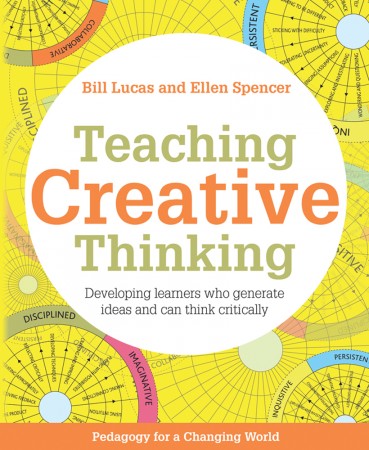'Teaching Creative Thinking' is reviewed by Russell Grigg

œThis is a very welcome and timely book. Creative thinking is likely to feature in the 2021 Programme for International Student Assessment (PISA) tests, run by the Organisation for Economic Co-operation and Development. The authors, based in the Centre for Real-World Learning at the University of Winchester, are well placed to discuss the subject. Bill Lucas co-chairs the OECD™s advisory group charged with drawing up a model to define creativity and to explore the feasibility of a creativity assessment. If this goes ahead and current trends continue, the book should hold relevance in Wales given the poor performance of its students in PISA over recent years. A few schools in Wales feature among those from eleven other countries currently undertaking research for the OECD to find out more about the thorny question of assessing creativity.
The book is organised into seven chapters. The first three chapters introduce the concept of creative thinking and teaching for capability. The authors see creativity as a matter of nurturing five capabilities or habits of mind: being inquisitive, persistent, collaborative, disciplined and imaginative. Each of these is broken down further into sub-habits. Persistence, for example, includes tolerating uncertainty, sticking with difficulty and daring to be different. In a field characterised by complex terminology, the refreshing simplicity of language makes the book very readable.
This is not to suggest that the book is superficial. Appropriate academic references are provided and the contributions of various researchers noted. The authors particularly draw on the work of Lee Shulman in setting out teaching and learning methods (˜signature pedagogies™) which they regard as the unique DNA of creative thinking. These include problem-based learning, where teachers use real-world problems and rigorous enquiry to enable learners to conduct research and apply their knowledge and skills to develop potential solutions. Chapters 4 to 7 provide extended examples of how schools have embedded creative thinking across and beyond the curriculum, including engaging parents, arranging work placements, school trips and the professional development of staff. The case studies will appeal to teachers and school leaders eager to read about examples of how the teaching of creative thinking works in practice. The A“Z of teaching and learning methods for developing creative thinkers, which features in the appendix, is also likely to prove popular. An index would also have been beneficial.
Chapter 7 is particularly helpful in addressing some of the common doubts and criticisms associated with the teaching of creative thinking. Curriculum constraints, tight budgets, examination pressures and initiative fatigue are familiar cries. The authors respond well to these and present a convincing argument for schools to take creative thinking more seriously. They gently challenge widely held preconceptions e.g. ˜school inspectors won™t be interested™ and ˜It™s another one of those fads that will be forgotten when the pressure mounts™, leaving the reader reassured and in a reflective, upbeat mood. The authors are essentially challenging readers to think about the purpose and values of education. This is topical given the recent UK parliamentary inquiry on the subject and, in Wales, Graham Donaldson™s vision for creativity to be central to young people™s experience at school. Teachers in Wales who now face the challenge of implementing the renaissance of creativity in the new curriculum would be well advised to dip into this book as a starting point. - Russell Grigg, Ministry of Education, United Arab Emirates
For more information and to purchase a copy of ˜Teaching Creative Thinking™ by Bill Lucas and Ellen Spencer - click here.
